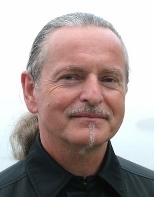Krzysztof Wodiczko, professor of visual arts in the Department of Architecture, has been awarded the 2004 Kepes Prize by the Council for the Arts at MIT. The award is given annually to a member of the MIT community whose creative work reflects the vision and values of Gyorgy Kepes (1906-2002), founder of MIT's Center for Advanced Visual Studies (CAVS).
Kepes work explored the relationships between art and science, and art and the environment. The award will be presented to Wodiczko on Oct. 28, at the council's annual meeting.
Wodiczko has taught at MIT since 1991. He is director of the CAVS and head of the Interrogative Design Group in CAVS. He is renowned internationally for his large-scale slide and video projections on architectural facades and monuments. Born in Warsaw, Poland, in 1943, Wodiczko emigrated twice, from Poland to Canada and then from Canada to the United States. He now splits his time between New York and Cambridge.
Since 1980, Wodiczko has created more than 70 projections on monuments and civic edifices including at The Hirshhorn Museum in Washington, D.C. (1988), The Whitney Museum of American Art (1989), Arco de la Victoria in Madrid (1991), City Hall Tower in Krakow (1996), Bunker Hill Monument in Charlestown (1998), A-bomb Dome in Hiroshima (1999), El Centro Cultural in Tijuana, Mexico (2001) and Central Library in Saint Louis (2004).
In 1996, Wodiczko began projecting video images involving sound and motion. The Hiroshima Projection, his third video projection, was organized after he was awarded the Hiroshima Art Prize in 1999 for his contribution to world peace as an artist. He moved on to interactive projects in April 2004 with the project in St. Louis. In the spring of 2005, he will create a projection in Barcelona that will use a prominent city monument as a vehicle for two-way, real-time communication with the public.
The Council for the Arts is a volunteer organization of MIT alumni and friends founded in 1972 to foster and support the visual, literary and performing arts at the Institute.
A version of this article appeared in MIT Tech Talk on October 27, 2004 (download PDF).






